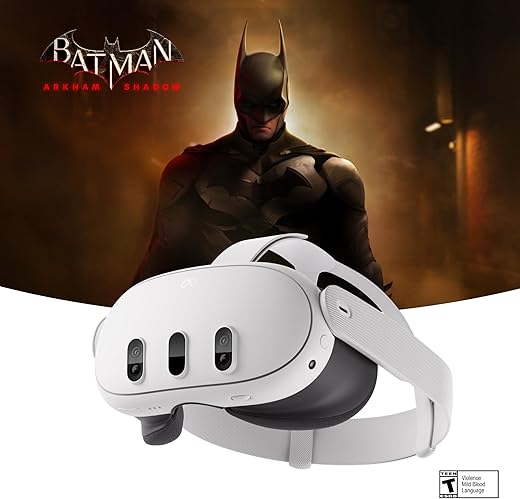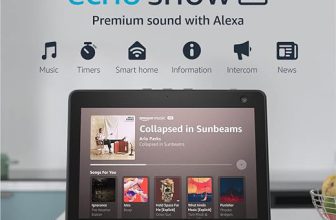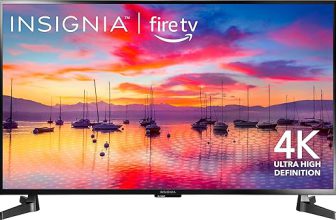
In the rapidly evolving realm of virtual reality, the comparison between the ‘Meta Quest 3 Ultimate’ and the ‘Oculus Quest 2 VR’ presents an intriguing exploration of technological advancements and user experiences. As I delve into the features, performance, and overall value of these two headsets, I aim to highlight the key differences and similarities that define their place in the market. This analysis will provide a clearer understanding of how these devices cater to the needs of both casual users and dedicated gamers.
Immersive Gaming

The Meta Quest 3 512GB offers an immersive mixed reality experience with superior graphics and storage, allowing users to blend digital and physical worlds seamlessly. It includes Batman: Arkham Shadow and a 3-month trial of Meta Quest+, providing added value for gaming and entertainment.
Immersive Gaming

The Oculus Quest 2 is an advanced all-in-one virtual reality headset with a fast processor and a high-resolution display, offering immersive gaming and entertainment experiences. Easy to set up without the need for a PC or console, it provides access to a vast library of both new and classic titles.
Meta Quest 3 Ultimate
Storage Capacity
512GB
Display Resolution
2064×2208 resolution per eye (4K + Infinite Display)
Mixed Reality Capabilities
Supports mixed reality with digital objects blended into physical space
Included Content
Includes Batman: Arkham Shadow and a 3-month trial of Meta Quest+
Comfort and Design
Slim and lightweight design for improved comfort during extended use
Oculus Quest 2 VR
Storage Capacity
64GB
Display Resolution
Higher resolution than original Quest, specific resolution not provided
Mixed Reality Capabilities
Primarily focused on virtual reality experiences
Included Content
No bundled games or subscriptions included
Comfort and Design
Standard weight; specifics on comfort not highlighted
Meta Quest 3 Ultimate
Oculus Quest 2 VR
Meta Quest 3 Ultimate
Oculus Quest 2 VR
Comparison chart


Unique Selling Points (USPs)
Meta Quest 3 (512GB)
- Ultimate Mixed Reality: Offers advanced mixed reality capabilities, allowing for immersive experiences.
- High Storage: With 512GB, it accommodates more games and applications.
- Bundled Games: Comes with Batman: Arkham Shadow and a trial for Meta Quest+.
Oculus Quest 2 (64GB)
- Affordable Price: More budget-friendly for those new to VR.
- Lightweight Design: Easier to wear for extended gaming sessions.
- Established Content: Access to a vast library of VR applications and games.
Pros and Cons
Meta Quest 3 (512GB)
Pros:
- Superior mixed reality experiences.
- Large storage capacity for more content.
- High-quality display and processing power.
Cons:
- Higher price point might deter some users.
- Heavier than the Oculus Quest 2.
Oculus Quest 2 (64GB)
Pros:
- Affordable entry point into VR.
- Light and portable design.
- Established game library.
Cons:
- Limited storage may require more management of content.
- Basic VR capabilities compared to mixed reality offered by Meta Quest 3.
Use Cases
- Meta Quest 3 (512GB): Ideal for gamers seeking cutting-edge technology, mixed reality applications, and extensive storage for a diverse library of games.
- Oculus Quest 2 (64GB): Best suited for newcomers to VR looking for a budget-friendly option with a solid lineup of existing games.
Conclusive Assessment
While both headsets have their strengths, the Meta Quest 3 (512GB) stands out in terms of mixed reality capabilities, processing power, and storage. However, if budget and portability are more critical factors for a user, the Oculus Quest 2 (64GB) may be the better choice. Thus, the recommended product is conditional: choose the Meta Quest 3 for advanced users seeking robust features, and the Oculus Quest 2 for those new to VR or on a budget.
Final Summary
In summary, the Meta Quest 3 provides superior features for users wanting an advanced mixed reality experience with ample storage and high-quality performance. The Oculus Quest 2 serves well for those looking for a cost-effective way to enter the world of virtual reality. Depending on your needs—whether it be cutting-edge technology or affordability—each product offers distinct advantages that cater to different user preferences.


Exploring Alternative VR Headset Options


Guidelines for Comparing Virtual Reality Headsets
When evaluating different virtual reality (VR) headsets, it is essential to consider various factors that will affect your overall experience. Below are general guidelines and key factors to consider when comparing products in the VR headset category.
1. Display Quality
Key Points:
- Resolution: Higher resolution provides clearer visuals.
- Refresh Rate: A higher refresh rate leads to smoother motion.
- Field of View (FOV): A wider FOV offers a more immersive experience.
Benefits:
- Enhanced visual fidelity improves gaming and media consumption.
- Reduced motion blur and lag for a more seamless experience.
2. Tracking System
Key Points:
- Type of Tracking: Inside-out versus outside-in tracking.
- Accuracy: The precision of the tracking system affects your movement experience.
- Controller Tracking: Consider how controllers are tracked and their responsiveness.
Benefits:
- Better tracking leads to improved gameplay and interaction.
- Inside-out tracking can simplify setup by eliminating external sensors.
3. Comfort and Design
Key Points:
- Weight: Lighter headsets are generally more comfortable for extended use.
- Padding: Quality padding and ergonomic design improve comfort.
- Adjustability: Look for adjustable straps and lens spacing.
Benefits:
- Enhanced comfort for longer sessions reduces fatigue.
- A well-designed headset accommodates a wider range of users.
4. Performance and Compatibility
Key Points:
- Processor and Graphics: Faster processors and better graphics capabilities enhance performance.
- Software Ecosystem: Compatibility with existing games and applications is crucial.
- Platform Compatibility: Ensure it works with your current devices (PC, console, etc.).
Benefits:
- Smooth gameplay and fewer technical issues.
- Access to a wider range of VR content increases usability.
5. Audio Experience
Key Points:
- Built-in Audio: Some headsets come with integrated audio systems.
- Audio Quality: High-quality sound enhances immersion.
- 3D Spatial Audio: Look for headsets that support 3D audio for an enhanced experience.
Benefits:
- Better audio can lead to a more immersive and realistic gaming experience.
- Integrated audio can reduce the need for additional equipment.
6. Battery Life and Connectivity
Key Points:
- Battery Life: Consider how long the headset can be used on a single charge.
- Charging Time: Faster charging can reduce downtime.
- Wired vs. Wireless: Wireless headsets offer freedom of movement, but may have limitations.
Benefits:
- Longer battery life allows for extended play sessions without interruptions.
- Wireless options can enhance the experience by eliminating cables.
7. Price and Value
Key Points:
- Initial Cost: Consider the upfront expense.
- Ongoing Costs: Account for the price of games and accessories.
- Warranty and Support: Good customer support can add value.
Benefits:
- A balanced assessment of cost versus features can lead to better purchasing decisions.
- Understanding long-term costs helps in budgeting for your VR experience.











Could you recommend a good VR game that works well on both headsets? I’m looking to get started!
Sure! One of the best games for both is ‘Beat Saber’. It’s super fun and perfect for both headsets. Plus, it’s a great workout too!
I’ve been using the Oculus Quest 2 for a while now and love it for social VR experiences. But I’m really tempted by the Meta Quest 3!
That’s awesome! The Quest 2 is great for social interactions. The Quest 3 just takes that a step further with better graphics and features. You might love it even more!
Hey, can you expand on the battery life comparison? I’m super curious about how long each headset lasts during intense gaming sessions!
What about accessories? Any must-haves for these headsets that could enhance the experience?
Definitely! Consider getting a comfortable strap for the Quest 2 and a lens protector for both headsets. They can really improve your overall experience!
Thanks for this comparison! I totally agree that the Meta Quest 3 has the edge with its features. I’m planning to upgrade!
Thanks for the support! The upgrade is definitely worth it, especially if you’re into cutting-edge features. Enjoy your new headset!
Pro tip: if you’re getting motion sickness on either headset, try adjusting the settings or taking breaks. It can make a big difference!
That’s a solid tip! Many users experience that, and adjusting the settings can really help with comfort. Thanks for sharing!
Great question! The Meta Quest 3 Ultimate generally offers better battery optimization, especially for longer sessions. The Oculus Quest 2 can run for about 2-3 hours, while the Quest 3 might stretch to about 3-4 hours depending on usage. Hope that helps!
Thanks for the breakdown! I’m thinking about using these for fitness apps. Do you think the Meta Quest 3 would give a better experience for that?
Absolutely! The Meta Quest 3’s improved tracking and graphics make it a fantastic choice for fitness apps—they really enhance the immersion. You’ll probably feel more engaged with your workouts!
Honestly, I’m leaning towards the Meta Quest 3 after reading this! The graphics and performance seem worth it.
Glad to hear you’re excited! The upgrade in graphics and performance is a game-changer. You won’t regret it!